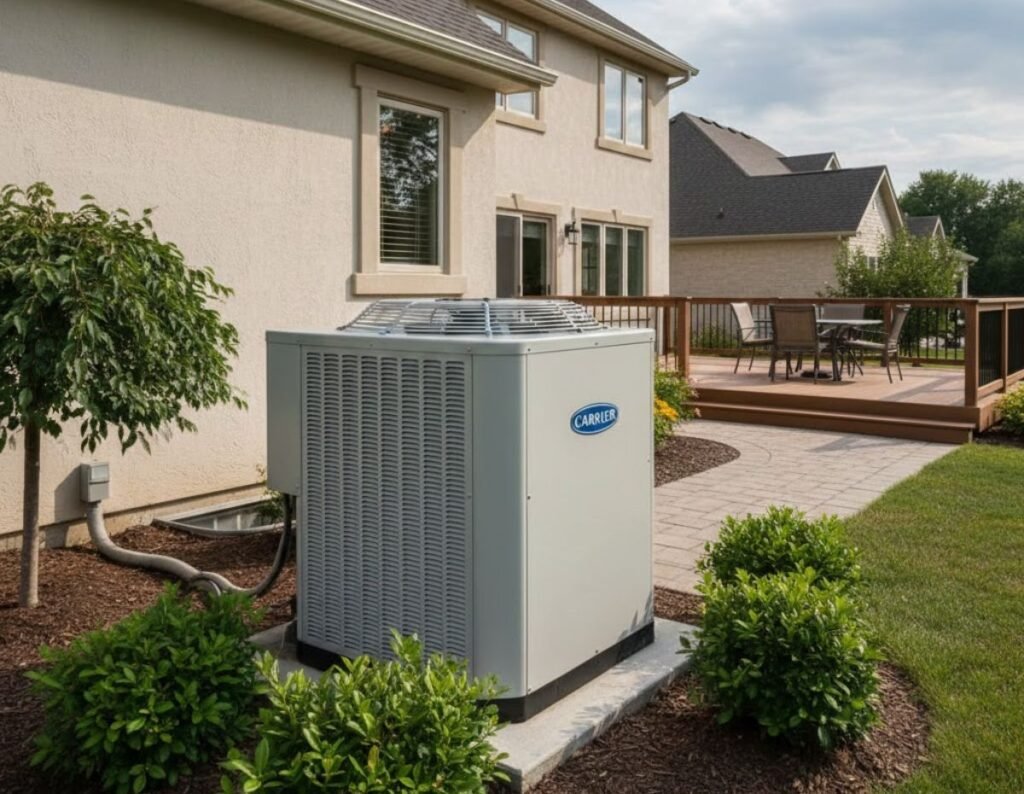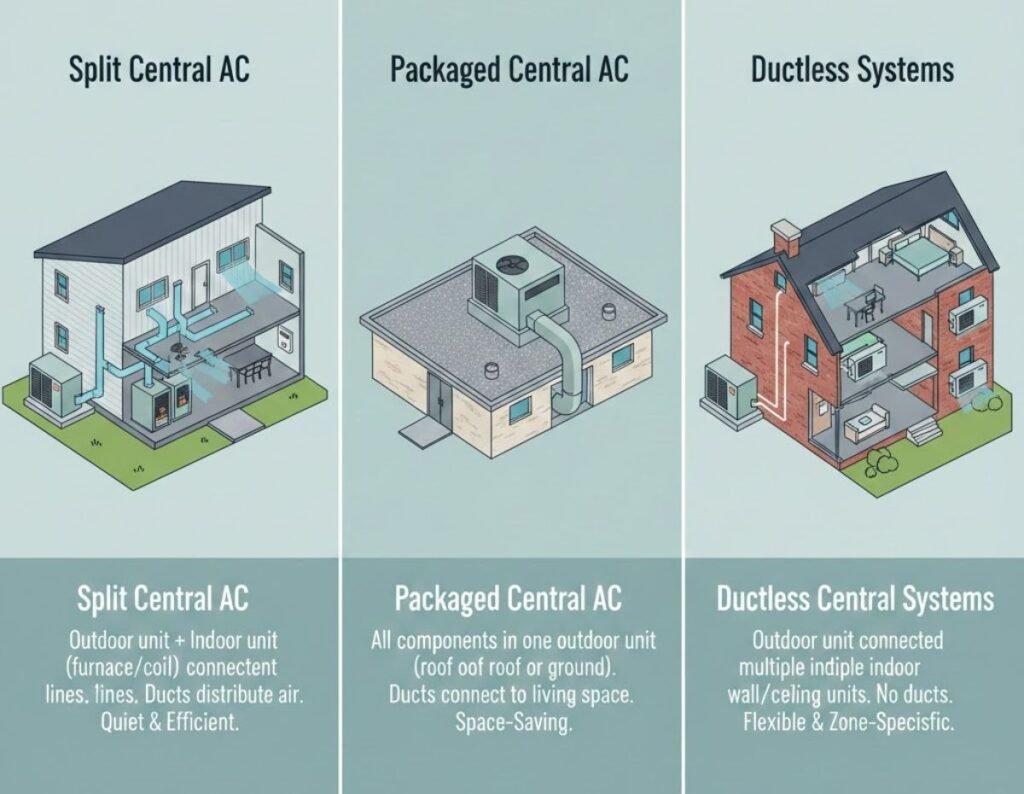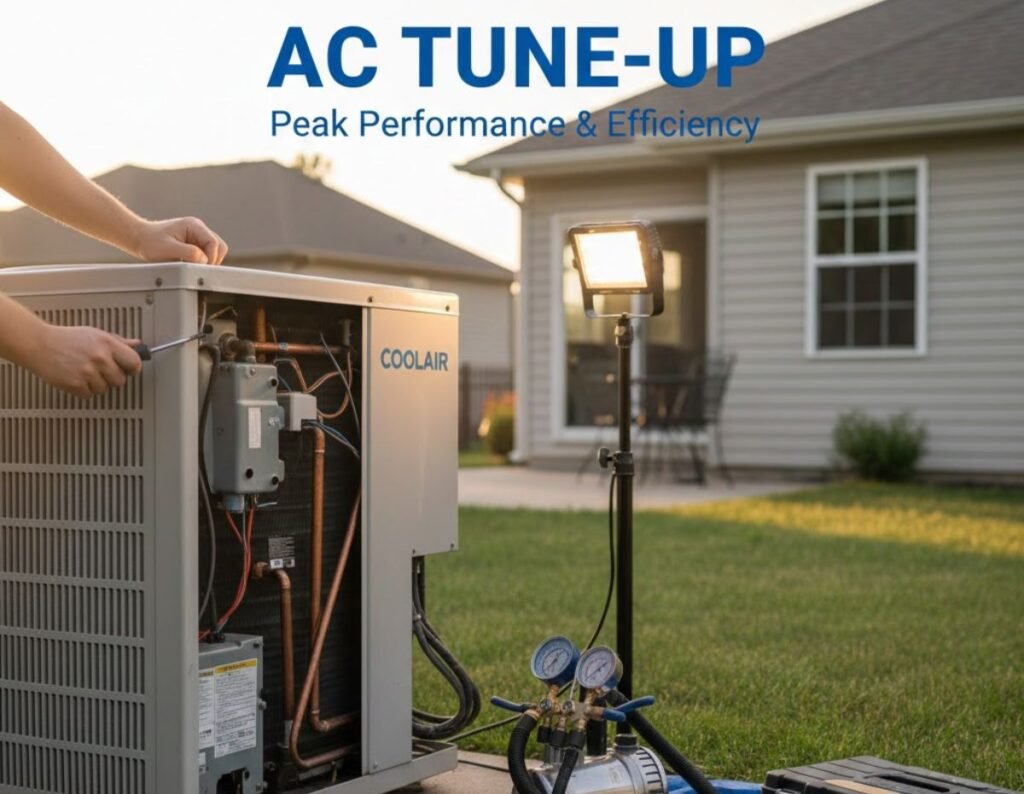Central air conditioners have become the gold standard for home cooling especially in larger homes or spaces where consistent, whole-house comfort is essential. Instead of cooling only a single room like a window or portable unit, a central AC system distributes cool, conditioned air through a network of ducts, ensuring every corner of your home maintains the same temperature. Whether it’s the peak of summer or a warm humid night, a central AC keeps your living environment balanced, fresh, and comfortable.
The biggest appeal of central air conditioning is its convenience. Once it’s installed, you barely have to think about it. A simple thermostat adjustment can regulate your entire home without needing to set up units in every room. Central AC systems are also known for their energy efficiency especially the latest models that come with high SEER ratings and inverter technologies.

This guide explains everything you need to know about central air conditioners, from how they work to how to choose the right system, installation requirements, costs, maintenance tips, and the latest technologies shaping the future of home cooling.
How Central Air Conditioning Works
Central air conditioners operate on the principle of heat exchange. Instead of creating cold air, they remove heat from inside your home and send it outdoors. The system relies on a refrigeration cycle involving refrigerant, compression, and heat transfer.
Split-System Design
Most central AC systems are split systems, meaning the components are divided into indoor and outdoor units. The outdoor unit contains the compressor and condenser coil, responsible for releasing the heat absorbed from your home. The indoor unit houses the evaporator coil and air handler, which pull warm air from inside your home, extract the heat from it, and send cooled air through the ducts back into each room.
The Refrigeration Cycle
The refrigerant plays the starring role here. It circulates through the system, absorbing heat indoors as it evaporates and releasing heat outdoors as it condenses. The compressor keeps the refrigerant under pressure, moving it between coils to repeat the cycle continuously.
Understanding this cycle makes it easier to troubleshoot common problems and maintain your system properly.
Types of Central Air Conditioning Systems

Split Central AC
This is the most common type of central air conditioning system. Its split-design structure makes it efficient, flexible, and quieter, making it suitable for most home layouts.
Packaged Central AC
In a packaged system, everything the compressor, fan, condenser, and evaporator coil is housed in a single outdoor unit. This type is often used in homes with limited indoor space or older buildings without basements or attics.
Ductless Central Systems
While similar to split ACs, ductless systems don’t rely on ductwork. These are ideal for older homes where installing ducts would be costly or difficult.
READ MORE: Portable AC Unit
Benefits of Central Air Conditioning

Central AC systems offer several advantages over room-based or portable coolers. First, they provide consistent, even cooling throughout your home. No hot spots, no rooms warmer than others just uniform comfort.
They also offer better air quality. With built-in filters, they trap dust, allergens, and pollutants circulating in your home. Many advanced systems even offer humidity control, helping prevent mold and bacterial growth.
Another benefit is noise reduction. Since the loudest components of the system are located outside, central AC units operate quietly indoors. There’s no constant humming in the window, no bulky unit taking up space just a peaceful cooling experience.
Key Components of a Central AC System
Condenser Unit
This is the large metal box you usually see outside homes. It houses the compressor, fan, and condenser coil.
Evaporator Coil
Located indoors, the evaporator coil absorbs heat from your home’s air.
Air Ducts
The network of ducts distributes cooled air throughout your home and returns warm air back to the system.
Thermostat
Your thermostat acts as the command center. Smart thermostats can automate cooling, track energy usage, and improve efficiency significantly.
Choosing the Right Central AC System
Choosing the right system begins with proper sizing. A system too large will cool your home quickly but inefficiently, leading to higher humidity levels. A system too small will run endlessly and struggle to keep your home cool.
A professional load calculation considers your home’s:
- Square footage
- Ceiling height
- Insulation quality
- Sunlight exposure
- Number of occupants
- Window efficiency
The right system ensures optimized energy use, consistent cooling, and lower monthly bills.
READ MORE: Mini Split Air Conditioners
Energy Efficiency Ratings Explained
SEER (Seasonal Energy Efficiency Ratio)
The higher the SEER rating, the more efficient the system. Modern systems range from SEER 14 to SEER 26. A SEER 16+ system is considered highly efficient.
EER (Energy Efficiency Ratio)
This measures efficiency at peak outdoor temperatures.
Energy Star Certification
Energy Star models meet strict guidelines and often use significantly less energy than standard models.
Installation Requirements for Central AC
Installing central AC involves more than just setting up equipment. It requires ductwork evaluation, electrical setup, and proper placement for the outdoor unit.
Ductwork
Old or damaged ducts can cause up to 30% energy loss. Your technician may recommend sealing or replacing ducts.
Electrical Setup
Central AC systems require a dedicated electrical circuit for safe operation.
Outdoor Space
Proper clearance around the outdoor unit ensures efficient airflow and reduces system strain.
Maintenance Tips for Long-Term Performance
Regular maintenance extends the life of your AC and improves efficiency.
- Clean or replace filters every 1–3 months
- Check and clean coils annually
- Inspect ductwork for leaks
- Ensure proper refrigerant levels
- Schedule professional servicing once a year
A well-maintained system can last 15–20 years.
Common Problems and Troubleshooting

READ MORE: Mitsubishi Air Conditioner
Central AC vs Window AC vs Split AC
| Feature | Central AC | Window AC | Split AC |
| Cooling Area | Whole house | Single room | One or two rooms |
| Installation Cost | High | Low | Medium |
| Noise Level | Very low | High | Low |
| Maintenance | Moderate | Easy | Moderate |
Central AC is best for homeowners who want whole-home comfort, while window and split ACs suit smaller spaces or tight budgets.
Best Brands for Central Air Conditioners
Some of the most reliable brands include:
- Trane
- Carrier
- Lennox
- Goodman
- Rheem
These brands are known for quality, durability, and energy-efficient models.
Cost of Installing and Running a Central AC System
The cost depends on system size, brand, SEER rating, and ductwork condition.
- Installation cost: $4,000–$12,000
- Annual running cost: $300–$700 depending on usage and efficiency
Investing in a high-SEER unit lowers long-term electricity costs.
Environmental Impact and Eco-Friendly Options
Newer systems use eco-friendly refrigerants like R410A and R32, which have lower environmental impact. Advanced systems also prioritize lower energy consumption, smart zoning, and reduced carbon emissions.
Future Trends in Central Air Conditioning Technology
Future technologies include:
- Smart thermostat integration
- Variable-speed compressors
- Quieter condenser units
- Improved air purification
- AI-based climate control
These innovations aim to increase efficiency, reduce noise, and optimize cooling performance.
READ MORE: AC Tune-Up
Conclusion
A central air conditioner is one of the most effective and convenient cooling solutions for modern homes. It offers unmatched comfort, improved air quality, and long-lasting performance. By understanding how the system works and choosing the right size and features, you can enjoy reliable, whole-home cooling for many years. Regular maintenance and proper installation are the keys to maximizing your system’s efficiency and lifespan.
FAQs
1. How long does a central AC system last?
Most systems last 15–20 years with proper care.
2. Is central AC better than split AC?
For whole-home cooling, yes. For single rooms, a split AC is more cost-effective.
3. How often should I service my central AC?
At least once a year.
4. Can I install central AC in an older home?
Yes, but ductwork or ductless solutions may be required.
5. Does central AC increase home value?
Yes, it’s considered a significant home improvement feature.

